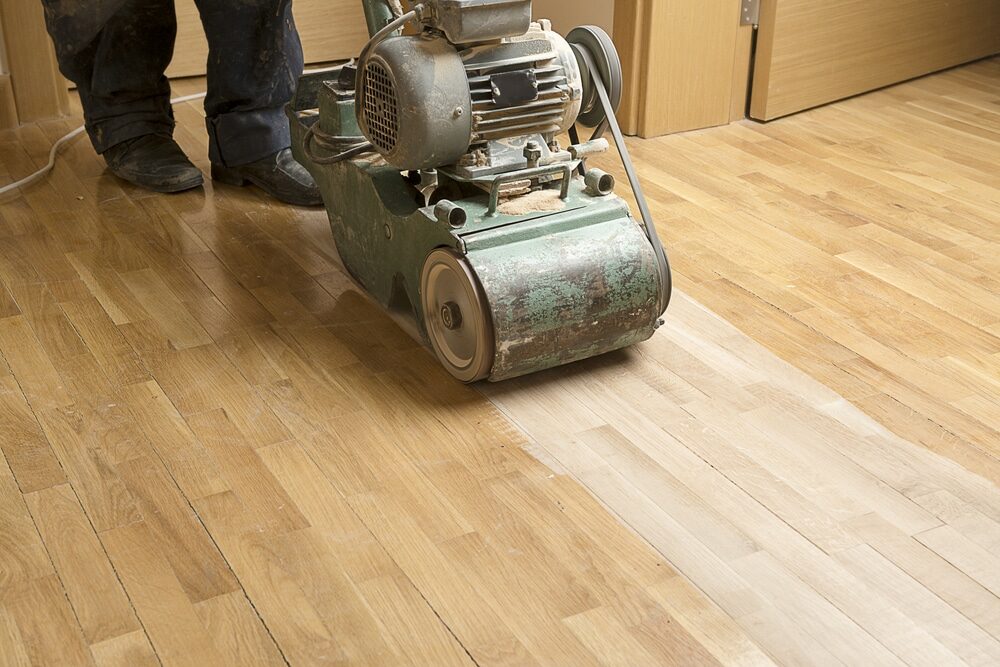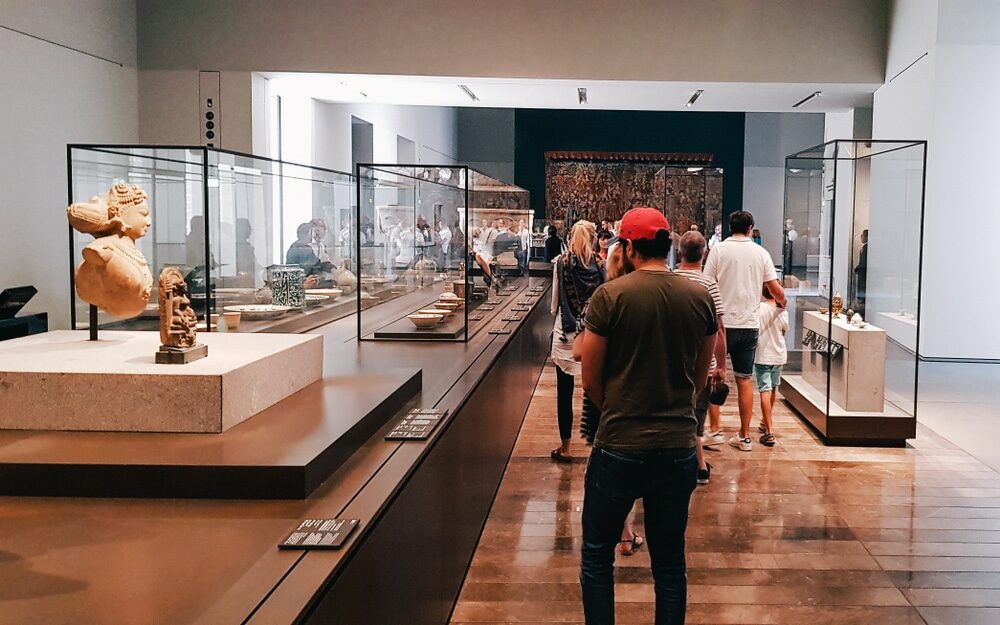London:
Nationwide:
Ultimate Guide to Refinishing Engineered Wood Floors: Expert Tips & Techniques Revealed
Posted on April 23, 2023
Blog
Master the Art of Refinishing Engineered Wood Floors with Our Comprehensive Expert Guide
Are you looking to give your engineered wood floors a fresh new look? Refinishing engineered wood floors is an effective way to revitalise their appearance and improve their durability. In this comprehensive guide, we’ll explore expert tips and techniques to help you successfully refinish your engineered wood floors. Follow these simple steps, and you’ll be enjoying a beautiful and long-lasting flooring makeover in no time.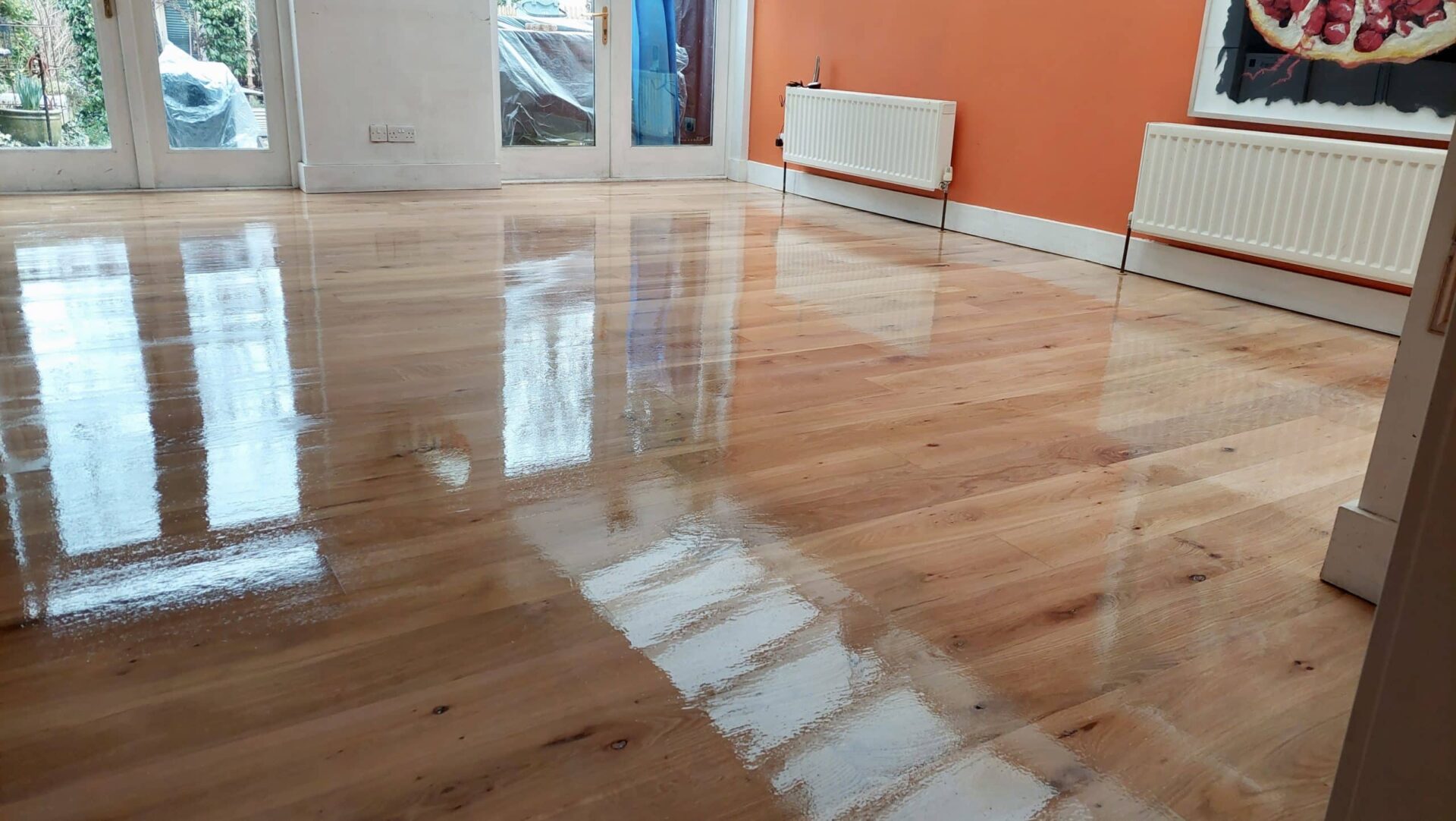
1. Understanding Engineered Wood Floors
a. What are engineered wood floors? Engineered wood floors are a popular flooring option, consisting of multiple layers of wood veneer. These layers are bonded together, with the top layer showcasing the desired wood species and appearance. Engineered wood floors offer a versatile, durable, and cost-effective alternative to traditional hardwood flooring.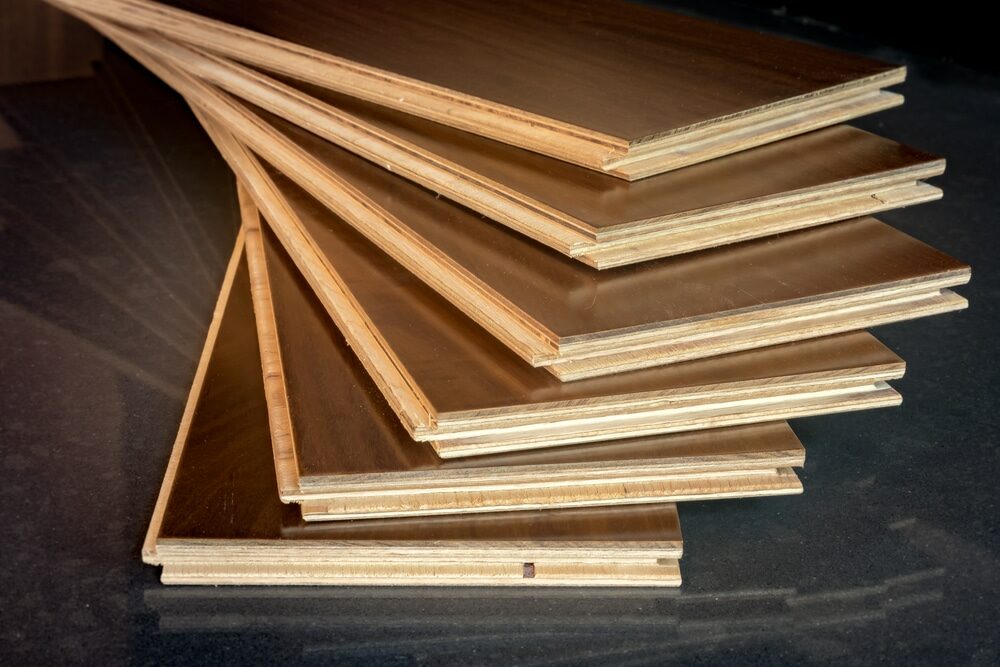 b. Pros and cons of engineered wood floors:
Pros:
b. Pros and cons of engineered wood floors:
Pros:
- more resistant to moisture and humidity than solid hardwood
- compatible with underfloor heating systems
- Can be installed using different methods (floating, glueing, or nailing).
- Eco-friendly as it uses less solid wood.
- A thinner top layer limits the number of times it can be refinished.
- Lower-quality options can be less durable.
- susceptible to damage from sharp objects or heavy furniture
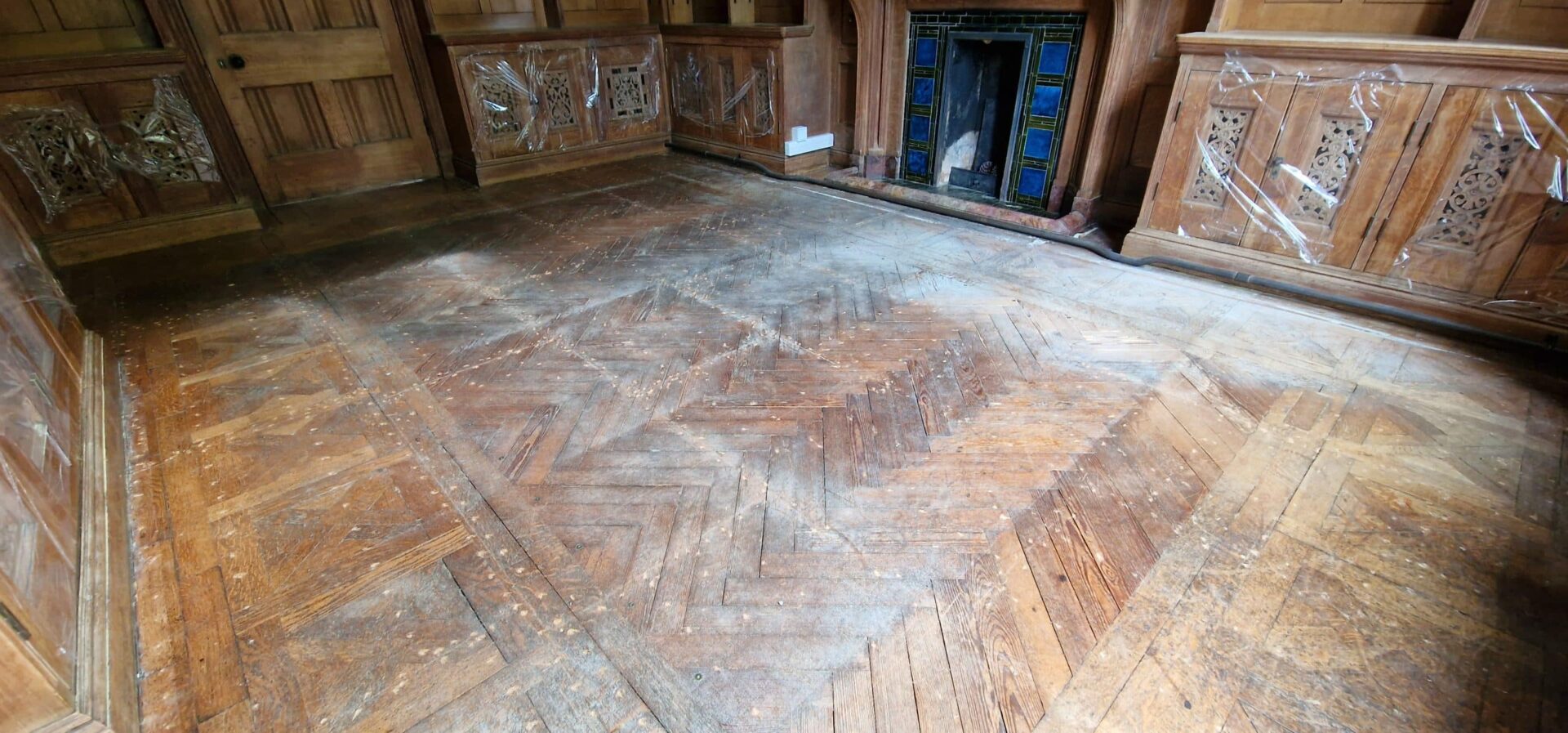
2. Preparing for the refinishing process
a. Tools and materials needed To refinish your engineered wood floors, you’ll need the following tools and materials:- Orbital sander or floor buffer with sanding attachments
- Sandpaper (various grits)
- Vacuum cleaner
- Wood filler
- Wood conditioner
- Stain and finish
- Brushes, rollers, and rags
- Protective gear (gloves, goggles, and a dust mask)
3. Sanding Engineered Wood Floors
a. Choosing the right sandpaper grit Selecting the correct sandpaper grit is crucial for achieving smooth, even results. Start with a coarser grit (60–80) to remove the old finish and any surface imperfections. Gradually progress to finer grits (120–150) for a smoother finish. b. Sanding techniques for engineered wood floors Using an orbital sander or floor buffer with a sanding attachment, sand the floor in the direction of the wood grain. Keep the sander moving to avoid creating uneven spots or sanding through the top layer. Sand the edges and corners with a handheld orbital sander or edge sander. c. Dealing with common sanding issues Some common sanding issues include uneven sanding, swirl marks, or sanding too deeply into the wear layer. To prevent these problems, maintain even pressure while sanding, change sandpaper regularly, and avoid lingering in one area for too long.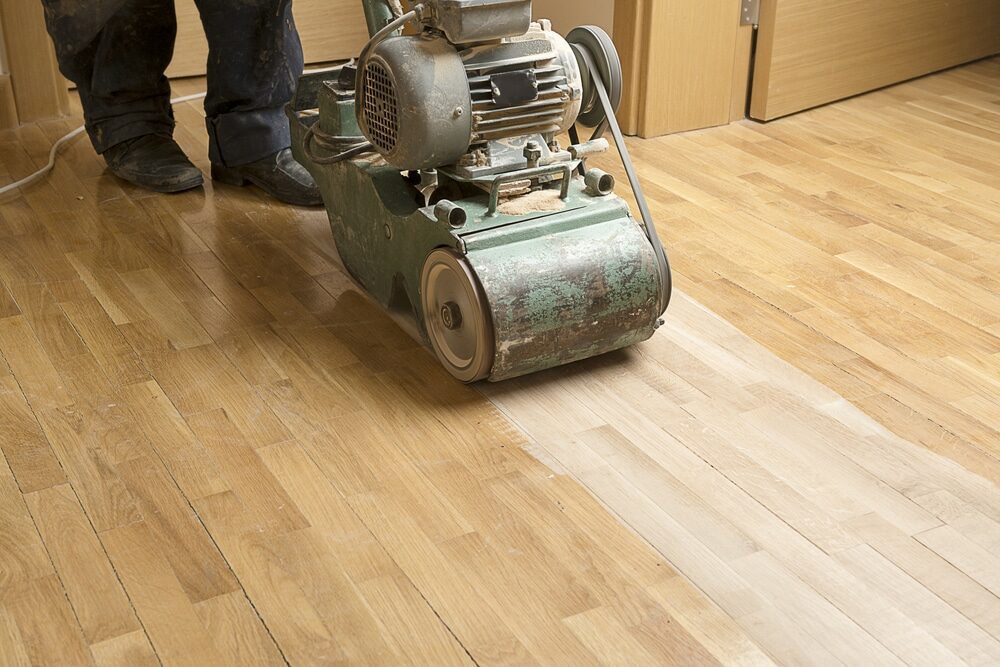
4. Cleaning and Prepping the Floor Surface
a. Vacuuming and wiping down the floor After sanding, vacuum the floor to remove dust and debris. Wipe down the surface with a damp cloth to remove any remaining dust, ensuring the floor is clean and ready for staining. b. Filling gaps and cracks Inspect the floor for gaps and cracks, filling them with a compatible wood filler. Allow the filler to dry according to the manufacturer’s instructions before proceeding. c. Using a wood conditioner: Applying a wood conditioner before staining can help ensure even absorption of the stain, preventing blotchiness. Follow the manufacturer’s guidelines for application and drying time.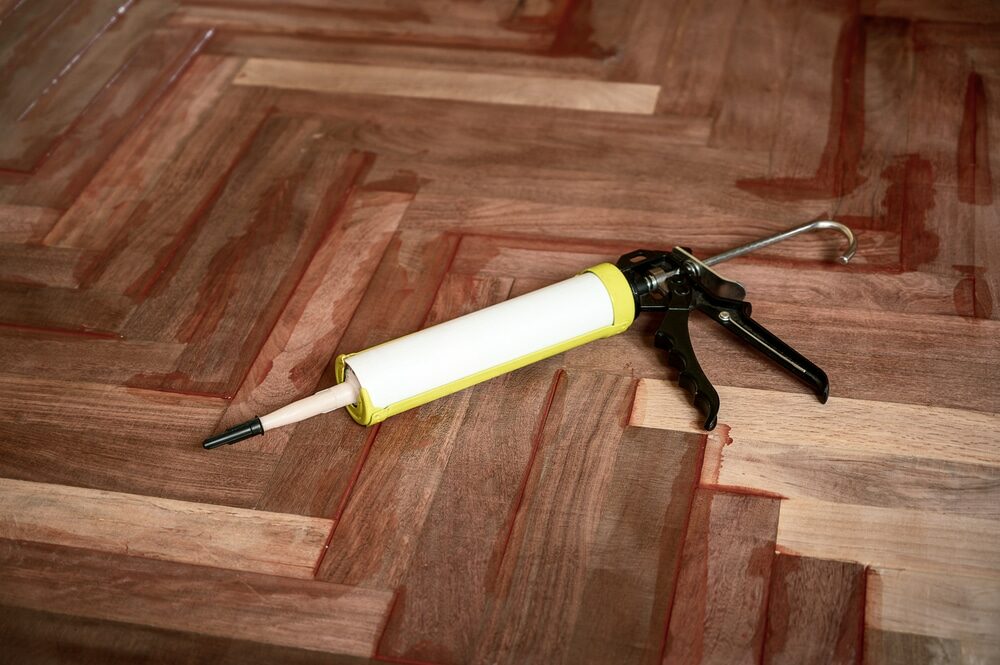
5. Staining and Finishing
a. Selecting the right stain colour: Choose a stain colour that complements your home’s décor and personal style. Test the stain on a small, inconspicuous area of the floor to ensure you’re satisfied with the colour before applying it to the entire surface. b. Applying the stain evenly Using a brush or rag, apply the stain to the floor, working in small sections and following the wood grain direction. Wipe away excess stains with a clean cloth to prevent pooling or uneven coloration. Allow the stain to dry according to the manufacturer’s recommendations. c. Choosing the best finish for your floors Select a finish that provides the desired level of sheen and protection, such as polyurethane, water-based, or oil-based finishes. Consider factors such as durability, dry time, and odour when choosing a finish. d. applying the finish and buffing the surface Apply the finish according to the manufacturer’s instructions, using a brush, roller, or applicator pad. Allow the finish to dry, and then lightly buff the surface with a fine abrasive pad. Apply additional coats as needed, allowing for drying and buffing between coats.
6. Reinstalling Furniture and Maintaining Your Refinished Floors
a. Safely moving furniture back into place After the finish has fully cured (typically 24-72 hours), carefully move furniture back into the room, using felt pads under heavy items to protect the floor from scratches. b. Tips for maintaining your newly refinished floors To keep your refinished floors looking their best, follow these maintenance tips:- Regularly sweep or vacuum to remove dirt and debris.
- Use area rugs or mats.
- in high-traffic areas to protect the floor from wear.
- Clean spills promptly to avoid staining or damage.
- Use a floor cleaner specifically designed for engineered wood floors.
- Avoid using harsh chemicals or abrasive cleaning tools that could damage the finish.
- Periodically assess the condition of your floors, refinishing as needed to maintain their appearance and durability.

Some Useful Links:
Conclusion
Refinishing engineered wood floors is a cost-effective way to revitalise their appearance and prolong their lifespan. By following the expert tips and techniques provided in this guide, you can successfully refinish your engineered wood floors, ensuring they remain beautiful and functional for years to come. Remember to choose the right tools, materials, and finishes, and always follow the manufacturer’s instructions for the best results. With proper care and maintenance, your newly refinished floors will continue to add warmth and value to your home.More from our Blog:
Wood Flooring in Hospitals: Exploring the Benefits 2023 Hardwood Flooring Trends: Unveiling the Latest Styles Sanding Wooden Floors – Increase the Value of Your Home
Sanding
We provide virtually dust-free sanding with our continuous belt machinery with mobile extraction units, giving you a safer environment for your family.
Oiling
This organic finish not only adds beauty to your home but also has exceptional water-repellent characteristics, making it easier to clean and maintain.
Waxing
This natural floor finish offers the softest and most mellow appearance – and leaves your floor able to breath.
Buffing
Using soft buffing machines (and hand-polishing where required) will bring a wonderful sheen to your newly-finished floor.
Repairs
We offer a full assessment of your wooden floors to determine what repairs are needed to provide the perfect working surface for the later stages of sanding, staining and sealing.
Restoration
We offer a comprehensive restoration process designed to address floors that are improperly fitted or damaged over time through wear and tear.
Request a fixed price quote for your wood floor restoration now
Simply enter your postcode below to get started.
Services
Wood Floor Sanding Wood Floor Restoration Wood Floor Scratch Repair Squeaky Wood Floor Repair Parquet Floor Sanding Parquet Floor Restoration Commercial Floor Sanding Church Floor Sanding Community Centre Floor Sanding School Floor Sanding Gap Filling Gap Filling with ResinCopyright © Mr Sander®
Privacy & Cookies Terms & Conditions Complaints Procedure Cancellation Rights Sitemap